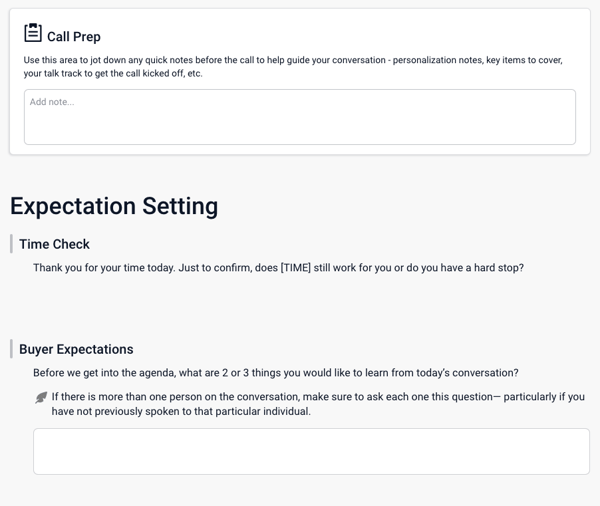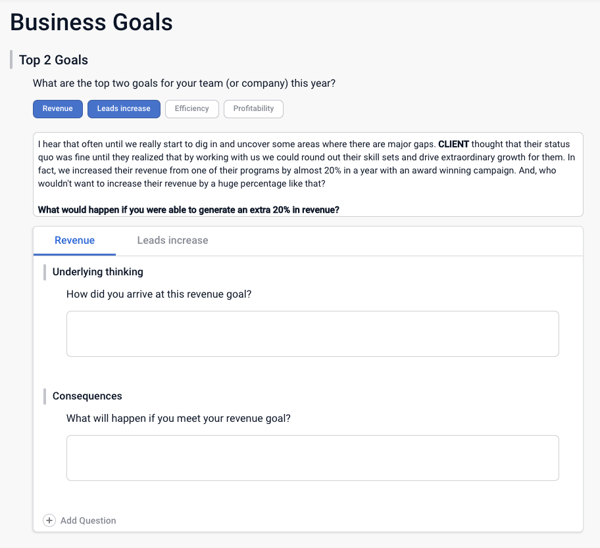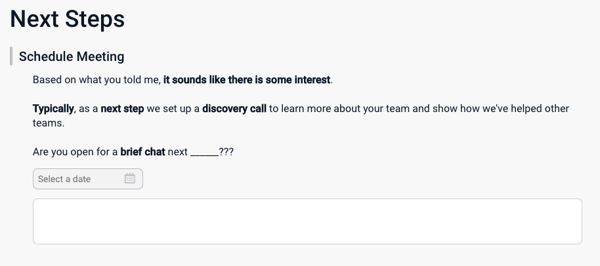Organizations are paying attention when it comes to sales, sales enablement, and sales software: In fact, they are spending billions of dollars annually on these sales softwares, recognizing both the impact that sales has to the bottom line and the need to use digital tools to compete.
Here's a look at how SaaS expenditures have grown in recent years, and projections for the future:

Image from BetterBuys based off of data from Gartner.
However, many of these tools increase quantity, not quality, of conversations with prospects, and the results suffer.
As a business owner, sales manager, or SDR, it’s understandable that you may not have the time or technical expertise to vet, select, and implement the best technologies for your organization.
At Revenue River, we understand that an effective sales enablement strategy combines the technology, processes, and content that empower sales teams to sell efficiently at a higher velocity. As we seek to equip our clients with the right tools and team to achieve their sales goals, we are constantly cutting our teeth on the latest sales enablement technologies to ensure that we can provide innovative, customized solutions.
The technologies we use undergo a vetting process that checks for quality, ability to integrate with other tools, reporting capabilities, friction (does this tool increase efficiency or does it introduce extraneous steps that interfere with a seamless process?), and stability. When we see alignment with the tool, the company that produces it, and what our clients are seeking to achieve, we partner with them.
Today I’m going to break down one of our sales enablement partner technologies, Costello. This technology enables us and our clients to improve the efficacy of the sales process, taking marketing-driven leads to sales-driven closes. I’ll share some of the secrets behind how Costello is enabling salespeople to have better conversations.
What is it?
Costello is a sales playbook software that sales reps use on sales calls to have great conversations. Costello benefits sales reps, SDR managers, Account Executives, and Sales Managers and Leaders by providing them with a framework for goal-oriented discussions with prospects.
One key differentiator for Costello among other sales playbooks is its dynamic interface. The playbook adapts real-time with the sales rep while they’re on a call, allowing them to engage with prospects in a way that is timely, relevant, and customized. Reporting features enable sales reps and managers to use quantitative and qualitative data about the call to make continual improvements to the script.
Here are some key features that make this a must-have tool for anyone who uses the phone to connect with prospects at any point during the buyer’s journey:
Conversation Planning: Buyers today are more equipped with information than ever before, leveraging online research to make decisions and conclusions before even talking to a live sales rep. The development of a playbook means that you can:
- Build trust by developing meaningful, memorable stories about your organization and your clients that relate back to the prospect’s own goals.
- Create consistency among your sales rep and the brand you put forth to prospects. Find what works from your best reps and use it across the board.
- Cover everything in your BANT, ANUM, NEAT or whatever framework you use without having to think about it.
- Plan for pushback. Even the smoothest sales rep can stumble over an objection. By mapping out common objections, you can respond without missing a beat.
- Drive your call toward the next step. By planning your conversation, the sales rep is in the driver's seat and can naturally lead prospects through to scheduling next steps at the end of the call.
Dynamic Interface: Playbooks of the past were static documents. Costello playbooks are designed to be open right in front of sales reps as they’re on the phone, with interactive features. Sales reps can access valuable sales enablement content in real-time during a call, such as objection responses, customer stories, value propositions, competitor battle cards, and voicemail scripts.
Conversation Continuity: Adaptive playbooks enable sales reps’ playbooks to follow them from call to call with a single prospect or organization, so they can get on new calls with that prospect with notes, a review of previously asked questions, and summaries right in front of them.
Call Effectiveness Measurement: Post-call, a review of the topics covered, objections raised, and more helps to determine where you’re winning over customers and where you might be losing them. This allows you to take a data-driven approach to improve your sales phone process.
How does it work?
Costello is comprised of two essential strategic components: the playbook and the software that enables the dynamic elements of the playbook.
When you first acquire Costello, you will develop a master playbook that encapsulates the general desired flow of a conversation with a prospect, as well as the points of divergence where responses, questions, or objections from a prospect as the conversation progresses might steer the conversation to different terrains.
Your playbook will contain some or all of the following:
- Reasons why you are reaching out to the prospect
- Pain points specific to the prospect
- Value propositions
- Power statements
- Common objections
- Customer/client stories to build trust that your product works
- Questions to qualify your prospect
- Desired next steps in your sales process
Once this strategy is established, it’s time to build out the playbook within the Costello software. At this point, you’ll use the intuitive drag-and-drop software to map your strategy into a dynamic playbook.
The fun starts after your system is set up and you can actually use Costello to speak to prospects. Start each call off on the right foot by selecting the reason for calling your prospect, and your playbook will pull up the talking points for the opener you’ve decided is effective for their situation.
Costello's playbook also reminds you of best practices as you navigate your call. In the screen capture below, you can see how this particular Discovery Call playbook is set up to do some expectation setting with the caller up front.
While the first question is a straightforward yes or no, the next question asking about agenda can have varying types of answers, so for that section, I've toggled "on" the optional notes field so I can capture the responses. The text next to the leaf is an optional "reminder" that you can include with your questions to cue yourself. It's not part of the script, but it's right next to the question so you can give yourself hints along the way to have a great call, consistently.

As the call unfolds and you select the responses of your prospect, the crucial messages and stories you need to engage your prospect will manifest.
In the example playbook below, you'll notice that we've entered into the part of the conversation where we talk about business goals for the client. To start, we ask what the top goals for the team or company are for that year. Depending on the response, we'll be able to select common answers. This action both records the answer and brings up talking points based on that answer.
In this case, the prospect has said that revenue and increasing leads are their top business priorities. Once those are selected, the talking points appear for both, and you can toggle from one to the next to read follow up responses and questions for both. Note that the below script follows best practices by providing the prospect with a relatable story, then turns the conversation back to the prospect, inviting them to share their own experiences.

An aside: A “no” during a Costello call is absent of that post-no moment of panic that SDRs might typically feel. You’ll simply use that “no” as a cue to where your prospect is in their thinking and take a more empathetic and trust-building approach.
Finally, once you get to the end of your call, you'll be guided to your "next steps" where you'll be invited to move your client through to the next stage in the sales process by scheduling your next conversation.

Costello gives everyone on the team data about what’s working on sales calls. Use what your SDRs are learning on calls to update your company’s sales playbook. When things need to change, you and your team will know in days—not months.
Gain the insights you need to coach reps on specific conversations and give them practical guidance on how to improve. Help SDRs transition from feature-based tactical calls to leading goal-based conversations with potential customers.
For an example of how Costello works in action and can transform your sales team, review this case study on an organization that implemented Costello: How An SDR Team Improved Conversion Rates By Nearly 300% Within 5 Months.
Integrations
You’ll want to set up integrations to make the most of your tool:
HubSpot Integration
Costello has joined the HubSpot Connect Partner ecosystem which allows data from Costello to appear in real-time in HubSpot through an integration. Here's how Co-Founder and Chief Strategy Officer at Costello, Rod Feuer, describes the benefit of the integration:
“Sales leaders can instantly see call-specific and deal-specific information for each sales call directly within the HubSpot interface, completely removing problems associated with managing two platforms separately. This powerful integration allows sales leaders to access the data they need to proactively coach and better manage sales pipelines.”
Slack Integration
Costello’s Slack integration improves internal communication by notifying managers or other relevant personnel once a call is complete with a summary, takeaways, and next steps published to Slack.
We like integration-friendly tools because they create a seamless experience for marketing and sales teams, enabling them to work efficiently and get centralized reporting, the foundation for a continual improvement process.
Why Is Costello Important?
Costello is important because companies that can get reps to take a consistent approach to sales calls (like the ones that can be achieved by using a Costello playbook) see individual rep performance improve by as much as 50%. That makes a huge difference when you look at whether or not a company will hit its revenue target.
In a Sales Performance Optimization Study, CSO Insights research determined that companies need roughly 72% of their reps to hit individual quota targets in order to hit the company target. If 50% of a sales team misses their individual number, then that company will miss its target. By implementing a dynamic sales playbook as part of your sales enablement suite, you’re significantly improving your odds at hitting those important growth-driving metrics.
Image Source: Costello, 2018
Costello creates a win-win for both sales reps and prospects. Prospects get the meaningful conversations they need as part of a modern buying process, and sales teams can ensure their messaging, information gathering, and selling points land consistently, driving revenue. After all, the sale is just the first step in a prospect's journey as a customer within your organization, so make a good first impression, and watch that customer lifetime value grow.


